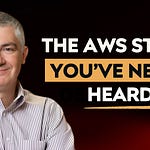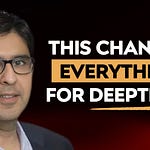When Chris Dyer talks about culture, he’s not just repeating buzzwords—he’s lived it. As the former CEO of PeopleG2, a five-time Inc. 5000 honoree, Chris built one of America’s fastest-growing companies by focusing on something most leaders overlook: the day-to-day experience of employees.
In this conversation, Chris shares lessons from an unconventional career path, from running hotels in Hollywood to pioneering remote work back in 2009. His journey offers a rare blend of real-world leadership lessons, innovative meeting strategies, and a clear framework for creating thriving teams.
From Sociology to CEO
Chris started with a sociology degree, fascinated by why people do what they do. That curiosity served him well—whether it was managing high-profile hotel guests (yes, including Brad Pitt and Jennifer Aniston) or turning around chaotic operations. But one defining moment came when a supportive boss was replaced by a toxic one, and Chris realized just how much a leader shapes the culture and morale of a team.
The 2009 Pivot: Remote Before It Was Cool
When the 2009 recession hit, Chris lost 40% of his clients overnight. Rather than laying people off, he moved the entire company to 100% remote work—long before Zoom calls and Slack channels were standard. This forced his team to rethink communication, meetings, and accountability from the ground up.
The result? A leaner, more engaged team that survived the downturn without losing a single employee.
Why One-on-One Meetings Don’t Work in Remote Teams
Chris has a controversial take: recurring one-on-one meetings are killing your remote or hybrid team.
Instead of repeating the same updates in silos, he recommends shifting to team accountability meetings—where progress, challenges, and coaching happen in the open. This not only increases transparency but also creates peer-to-peer accountability.
The Power of Purpose-Built Meetings
One of Chris’s biggest leadership innovations was naming and designing specific meeting types so everyone knew their role.
Cockroach Meeting – A quick, 15-minute huddle to solve a small problem and get unstuck.
Ostrich Meeting – Short skill-sharing sessions to “pull your head out of the sand” and learn something new.
Tiger Team Meeting – All-hands-on-deck for major issues or opportunities.
Tsunami Planning – Hypothetical “what if” scenarios to encourage creativity and identify hidden team dynamics.
These formats lowered anxiety, improved participation, and made meetings more productive.
Fixing the Vacation Dread Problem
Many employees avoided taking time off because coming back meant facing hundreds of unread emails. Chris implemented a system where employees deleted all emails received while away and relied on a quick “catch-up meeting” with the team to get important updates. The result? More vacations taken and happier, more refreshed employees.
The Seven Pillars of Great Culture
After years of experimentation, Chris distilled his approach into seven universal pillars:
Transparency – Share wins, losses, and financials openly.
Positive Leadership – Say “yes” more often and focus on what’s working.
Listening – Actively gather and act on feedback.
Uniqueness – Celebrate and leverage individual strengths.
Measurement – Track what matters and share the data.
Recognition – Acknowledge great work consistently.
Dealing with Mistakes – Distinguish between errors (lack of training or carelessness) and mistakes (good intent, wrong outcome) and respond accordingly.
The Culture–Performance Connection
For Chris, culture isn’t a “soft” business metric—it’s the engine that drives results. The better the culture, the faster sales grew, customer service improved, and innovation flourished.
As he puts it: “If your training, tools, and environment are great, your people will do their best work. Everything starts there.”
Key Takeaways for Leaders:
Meetings should be designed with clear purposes and roles.
Transparency builds trust and fuels problem-solving.
Celebrate wins, share lessons from mistakes, and focus on what’s working.
Culture is a performance multiplier—ignore it at your peril.
Even if you never listen to the full conversation, adopting just one of Chris’s ideas—like Cockroach Meetings or transparent P&L sharing—could shift the way your team works.
👂🎧 Watch, listen, and follow on your favorite platform: https://tr.ee/S2ayrbx_fL
🙏 Join the conversation on your favorite social network: https://linktr.ee/theignitepodcast
Chapters:
00:01 Introduction and guest background
00:42 Early career path from sociology to hospitality
02:04 Lessons from great vs. toxic bosses
06:27 Transition to background check industry
07:30 Launching first company after 9/11
08:27 Building culture at PeopleG2
09:03 Impact of 2009 recession and pivot to remote work
13:34 Problems with recurring one-on-one meetings
15:39 Shifting to team accountability meetings
19:38 Redesigning meetings for remote and hybrid work
21:09 Cockroach meeting concept
25:03 Ostrich meeting concept
27:33 Fixing post-vacation overwhelm and inbox zero policy
31:55 Creating healthy boundaries in remote work
35:43 Tiger team meeting concept
40:27 Reducing meeting anxiety with structure and clarity
41:43 Tsunami planning meeting concept
47:02 Coaching communication styles within teams
48:56 Culture as a driver of performance
49:59 Introduction to the seven pillars of great culture
56:07 Transparency and measurement in practice
01:00:54 Positive leadership and focusing on what works
01:06:26 Handling mistakes vs. errors in organizations
01:10:26 End of main discussion










